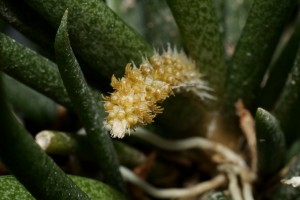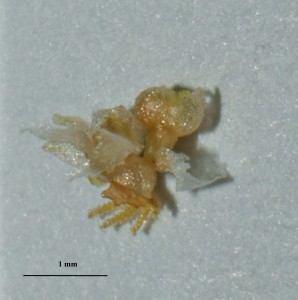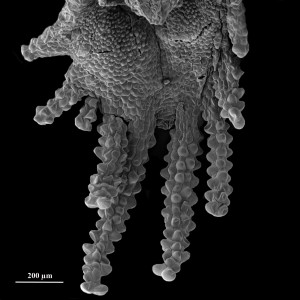by Kevin L. Davies
Since the 1970s, the opportunities for studying botany, both at school and at undergraduate level in the UK, have diminished considerably. At UK universities, botany is now seldom taught as a subject in its own right, but merely as an aspect of biological sciences, and in many instances, university botanical gardens have long been converted into staff car parks. Even so, it is still possible for those orchid growers amongst you, whose interests extend beyond cultivating and exhibiting your plants, to make a valid contribution to orchid science. You won’t necessarily need any laboratory equipment. Indeed, there are still so many enormous gaps in our knowledge of orchids that many everyday observations are likely to be new. There are many ways in which you can get involved. Here are a few suggestions:
- Volunteer to work at your local nature reserve, botanical garden, museum herbarium or alongside an experienced, qualified botanist. Your help will be greatly appreciated and you will learn a lot of botanical and practical skills.
- Conservation – Get involved with your local nature reserve or conservation body. If practical conservation is not possible (e.g. owing to age or illness), you may be allowed to help as a volunteer in the office or help raise money for particular projects. Those who are mainly interested in the conservation of tropical orchids should consider becoming members of Orchid Conservation International (OCI), supporting the Orchid Seed Stores for Sustainable Use (OSSSU) and, of course, their local orchid society.
- Collectively, the range of orchid species found in the greenhouses of amateur growers by far exceeds the diversity housed in many botanical gardens. Make your unusual and rare orchid material available to bona fide researchers. This could involve donating plants, pressed herbarium specimens or spirit-preserved flowers. Whole plants and flowers can be pressed between several layers of blotting paper or flowers preserved in alcohol. It doesn’t really matter whether you have been able to identify the specimen, as this can be done at a later stage. However, the name of the collector, the date of collection, the locality and description of habitat (or source, if cultivated) are all essential data and should appear on the label, together, if possible, with a description of colour and scent, if present. These specimens, and possibly drawings, can then be deposited at the herbaria of museums and botanical gardens, where they will be made available to others for scientific study. Those who own national collections of orchid genera, in particular, should seriously consider depositing herbarium specimens. Generally, herbaria are much more interested in receiving specimens of orchid species than specimens of hybrids, unless, of course, the latter are of historical importance.
- Longevity – It is well known that flowering plants have more or less fixed lifespans. Ephemerals have very short life cycles, resulting in the formation of several generations during the course of single year. Annuals live for just a year, flower, set seed, and then die. Biennials produce vegetative growth during their first year, flower the following year and, after seed production, also die. Perennials, continue to grow and flower for several years. Orchid nurseries are keen to state, quite correctly, that orchids, being perennials, are likely to enhance your collection or home for several years. However, while some perennial plants are long-lived, others are short-lived, and in reality, we still know very little about orchid longevity. It is now well established that longevity in plants, as in animals, is under genetic control and that the process of ageing involves programmed cell death. Merely recording the lifespan of orchids, both in the wild and in cultivation, could form the basis of a worthwhile, long-term project that might explain to some degree why so many orchid species are relatively short-lived in cultivation.
- Pollination studies – We still know very little about the pollinators of many orchids. Until recently, it was assumed that any insect (also birds in the tropics) that alighted on the flower was the pollinator, when in fact it was merely a casual visitor. In order to be identified as a pollinator, it is essential that the presumed pollinator is observed to transfer pollinia from anther to stigma. This type of study requires a lot of patience, long hours in the field and excellent photographic skills. Often, a specialist will need to identify the insect pollinator for you.
- It is estimated that only one-third of orchid species reward their pollinators. The remainder rely mainly on deceiving pollinators to visit the flower. However, the presence of a food reward reinforces pollinator behaviour. The most common food reward in orchids is nectar and, depending on whether the sugar it contains is mainly sucrose (cane sugar) or glucose and fructose, nectar can be classified as sucrose-dominant or hexose-dominant. It was thought that the type of nectar present (type of sugar and concentration) reflected the type of pollinator. However, the current thinking is that closely related species all produce the same type of nectar, regardless of pollinator. This hypothesis needs to be tested on genera that contain a range of pollinators. Using a refractometer, nectar-sugar concentration can be expressed as a percentage. The presence of glucose in nectar can be detected by inserting a glucose-sensitive stick (of the type used by sugar diabetes sufferers for detecting glucose in urine) into the flower. Sucrose gives a negative result with this test. Eventually, the sucrose is often converted by cell wall enzymes called invertases into glucose and fructose, or by micro-organisms present in the nectar. The maximum volume of nectar (and fragrance) produced often coincides with that period of the day (or night, in moth-pollinated species) when the pollinator is most active and thus, visits to the flower are most frequent. It is known that in some species, the nectar is reabsorbed once the pollinators become less active. This both enables conservation of energy and material by the plant and deters visits by nectar-robbing insects. Our knowledge of nectar production, content and reabsorption in many orchids is still very fragmentary.
- Many orchids offered for sale are misnamed. Often, these have small flowers that can best be appreciated through a microscope. Those growers who are satisfied just by the general appearance, colour and scent of their orchids, frequently miss out on the beautiful intricacy and evolutionary adaptation of these flowers. In my opinion, all orchid growers who are seriously interested in the scientific aspects of their hobby should own a microscope. This need not be expensive, and good second hand instruments can be purchased for moderate sums. Here is an example: The plant shown (Figure 1)
 entered my collection mislabelled as Eria aurea. It soon flowered, but the individual flowers were too small to appreciate or examine closely (Figure 2), being about 1 mm in diameter.
entered my collection mislabelled as Eria aurea. It soon flowered, but the individual flowers were too small to appreciate or examine closely (Figure 2), being about 1 mm in diameter. Microscopic examination (in this case by means of a scanning electron microscope, although an inexpensive light microscope would also show much of this detail) revealed the intricacy of the flower (Figure 3)
Microscopic examination (in this case by means of a scanning electron microscope, although an inexpensive light microscope would also show much of this detail) revealed the intricacy of the flower (Figure 3)  and the fimbriate and highly papillose nature of the labellum (Figures 4 & 5.)
and the fimbriate and highly papillose nature of the labellum (Figures 4 & 5.)

 and enabled me to identify it as Phreatia matthewsii (syn. Oberonia myosurus). Identifying a mystery species is one of the most enjoyable aspects of orchid growing. Moreover, it is still possible to discover undescribed species in amateur collections, albeit rarely.
and enabled me to identify it as Phreatia matthewsii (syn. Oberonia myosurus). Identifying a mystery species is one of the most enjoyable aspects of orchid growing. Moreover, it is still possible to discover undescribed species in amateur collections, albeit rarely.
8. Population studies – Orchid populations can expand and contract, and carefully plotting orchid distribution and studying this process over a number of years enables us to assess their development. Remember also that many of our native orchid populations are likely to contain hybrid swarms. If you are new to surveys of this kind, always try to work alongside an experienced ecologist or perhaps join the Botanical Society of the British Isles, or some similar organization.
As you can see, for those so inclined, there are still ample opportunities for original research on orchids. Doubtless, you will be able to think of other equally interesting fields of study. What is, however, paramount, is that any observations you make, any experiments that you perform and any data that you obtain are presented in appropriate journals so that the information can be taken seriously and disseminated. In the meantime, don’t be afraid to ask for help and advice. Good luck!